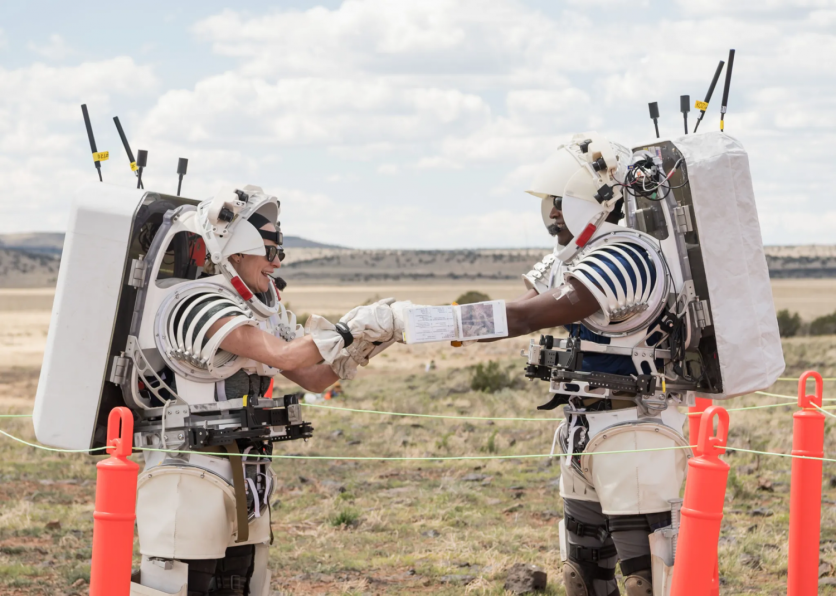NASA has provided a glimpse into how astronauts simulate moonwalks in the Arizona desert, a crucial preparation for the upcoming Artemis III mission, which is scheduled for September 2026.
Some photos recently released by NASA show the space agency's astronauts "moonwalking" in the Arizona desert.

NASA Simulated Moonwalks in the Arizona Desert
NASA astronauts Kate Rubins and Andre Douglas performed four simulated moonwalks and conducted field tests to refine equipment and procedures essential for lunar exploration.
The simulations were conducted between May 13 and May 22 in Arizona's San Francisco Volcanic Field, which was chosen for its geological similarity to lunar landscapes shaped by ancient volcanic activity.
Rubins and Douglas conducted geological observations, collected samples, and tested various technologies slated for Artemis missions. These included augmented reality displays for navigation assistance and lighting beacons to aid the crew's return to a lunar lander.
Accompanying the astronauts were teams of engineers and scientists, both in-field and remotely stationed at NASA's Johnson Space Center in Houston. This dual approach aimed to mirror the operational challenges of conducting missions on the moon, some 240,000 miles away.
NASA said that the Arizona desert, despite its earthly features like cows and wind, provided a suitable analog for lunar conditions. Geologically similar to the moon's Marius Hills region, it offered identical rock compositions and formations, which are crucial for understanding lunar geology and selecting viable landing sites.
Lauren Edgar, a geologist at the US Geological Survey, noted the significance of identifying subtle differences in rock formations similar to what astronauts will encounter at the moon's South Pole.
Edgar highlighted the astronauts' ability to discern these geological nuances during the simulations despite adverse weather conditions, prompting an early conclusion to one moonwalk.
The simulations were closely monitored by Earth and planetary scientists at NASA Johnson, who provided real-time guidance and expertise. Their roles included assessing scientific tasks, analyzing data sent from Arizona, and adapting mission plans based on discoveries made during the simulations.
Read Also : The First Non-Americans to Land on the Moon Will be Japanese as NASA, JAXA Sign Agreement for Lunar Rover
The 'Scrum'
This dynamic process involved interdisciplinary teams, such as volcanologists and mineralogists, collectively known as the "scrum," tasked with rapid decision-making to optimize scientific objectives during the missions.
One significant outcome of the Arizona simulations was validating geologic mapping techniques using data from Earth-based satellites.
While future lunar missions will rely on NASA's Lunar Reconnaissance Orbiter data to map the moon's South Pole, the Arizona simulations enabled scientists to refine their mapping methodologies using terrestrial satellite data.
This iterative process aimed to ensure accuracy in identifying scientifically valuable geological features and optimizing landing site selection for Artemis III.
"My experience in Arizona was incredible! I worked with several teams, explored an exotic landscape, and got a taste of what it's like to be on a mission with a crew," Douglas said in a statement.
Related Article : NASA Wraps Up 1st Phase of Ambitious Project That Aims to Put a Nuclear Fission Reactor on the Moon

ⓒ 2025 TECHTIMES.com All rights reserved. Do not reproduce without permission.




